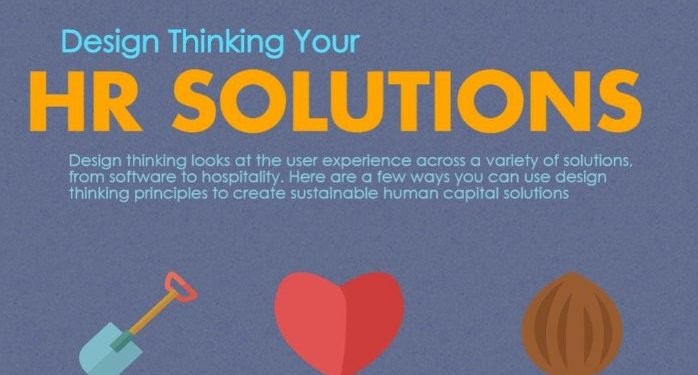
Ever wondered why most HR initiatives fail or mostly do not deliver the desired outcomes? Do all your (HR) customers – employees, leaders, candidates, and business counterparts’ typical response is “this is not what we expected, we had a completely different expectation.”
This is where Design Thinking can contribute to help HR not only to achieve the expected outcomes but also foster the stickiness factor by crafting persuasive experiences at every point of interface with the internal customers. This enables higher customer engagement and internal customer satisfaction resulting in HR alignment with the Business strategies and goals.
Design Thinking is an iterative process, connecting well-defined set of principle together that breeds innovation and produces range of possible solutions. Following are three fundamentals principles which HR can apply Design Thinking to become an experience Architect than just an process implementer.
1. Empathise with customers: The very basis of this principle is the ability to empathize. Empathy allows one to understand others experiences, feelings, perspective creating prospects for engagement. HR Design thinkers could invest in developing Personas of their customers. Personas are archetypes built after an exhaustive research and observations of the potential users. Each persona is thoughtfully defined based on the attributes they assume to represent. The attribute could includes social, economical demographic characteristics, to their needs, desires, habits, cultural backgrounds with similar experience needs/domains for eg manufacturing line managers/ team leaders or new hires in the first quarter into the system. It essentially requires chalking a journey maps based on these personas of customers at every step. A thorough analysis of the Personas gives immense clarity and insights in problem solving.
2. Generating range of alternatives and packing them into prospective solutions: A diverse group can involve in brainstorming to generate a range of alternatives for the problem instead of evaluating a specific solitary best idea. A variety of options offers an opportunity to yonder outside the obviously typical solutions demanding innovation and creativity. The advantage of having a diverse group while generating solutions is that opens up broader perspectives. The ideas then can be carefully prioritized, customized and tested with the target customer similar to prototyping with the end user.
3. Testing the prospective solution: Assessing the prospective solution essentially churns out qualitative and quantitative inputs and data, thereby qualifying further empathy with the customers. This also allows experimentation in HR whilst saving the time and resources which could have wasted otherwise.
Design Thinking is at relatively nascent in HR but is compellingly promising. It can find its finds it application right from Onboarding, Talent management, Performance Management, Talent Acquisition and Succession planning. Design Thinking application to HR can has the potential to reimagine and engineer customer experience to whole new heights enabling loyalty and delight in employees.
To know more on Design Thinking and its application in HR, Innovation & Problem solving reach me at lakshmi@lakshmisreenivasan.com or lakshmi.sreeni@gmail.com
